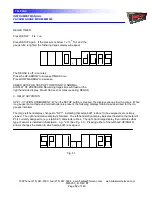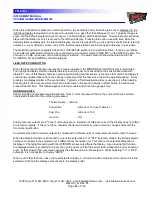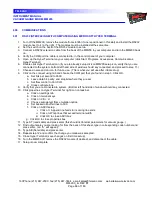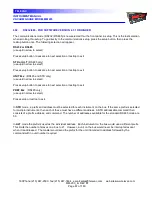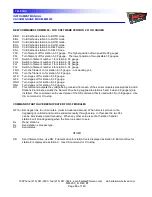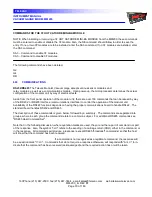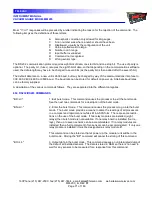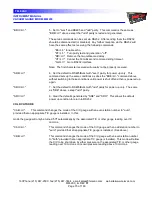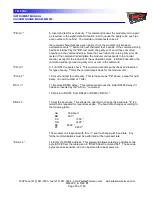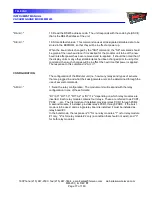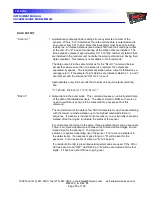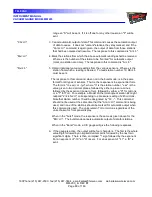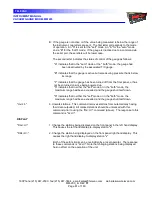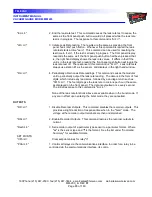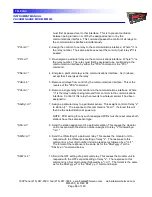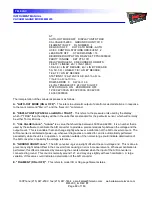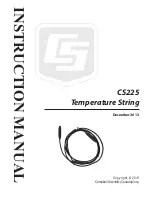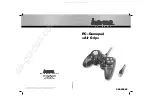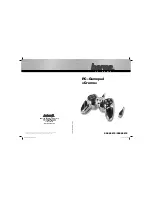
INSTRUMENT MANUAL
VACUUM GAUGE MODEL MM200
160Phone:(215) 947-2500 fax:(215) 947-7464 e-mail:[email protected] web site:www.televac.com
MM-200_im REV M
Page 76 of 160
TELEVAC
"PE<cr>"
8. Insert and test for even parity. This command causes the modular unit to insert,
as required, in the eighth data bit location, a bit to cause the parity to be even (an
even number of one bits). The modular unit also tests to see if
the received characters have even parity, if not, the modular unit sends an
exclamation mark "!" before the next character that it sends. If the command string
had been blanked by the "BE" command, the parity error could have occurred
anywhere in the command string. Note that, even when there is a parity error de-
tected, if the command is intelligible, the modular unit responds in the normal
manner, except for the inclusion of the exclamation mark. In RS485 operation, the
command will be ignored if a parity error occurs in the command.
"PF<cr>"
9. Turn OFF the parity check. This command cancels parity check and insertion
for type of parity. This is the normal default mode for the modular unit.
"PO<cr>"
10. Insert and test for odd parity. This is the same as "PE" above, except for odd
parity. (An odd number of 1 bits).
RD<cr>"
11. Remove RS485 delay . This command removes the initial RS485 delay, if it
had been inserted by the "AD<cr>" command.
12. Return to RS232 (from RS422 or RS485) "RR<cr>".
SBll<cr>
13. Set the baud rate. This allows the operator to change the baud rate. "ll" is a
letter that is repeated for redundancy sake. The baud rate changes according to
the following table:
AA
300 baud
BB
600 "
CC
1200 "
DD
2400 "
EE
4800 "
FF
9600 "
The modular unit responds with "A<cr>" prior to changing it's baud rate. Any
further communications must be performed at the new baud rate.
"EAx<cr>"
14. Enter the RS485 address. This command allows entering an address code
byte (ASCII) from the table given in "RS485 Host Command Set". These code
bytes are case sensitive, and can be stored for use at power up.

